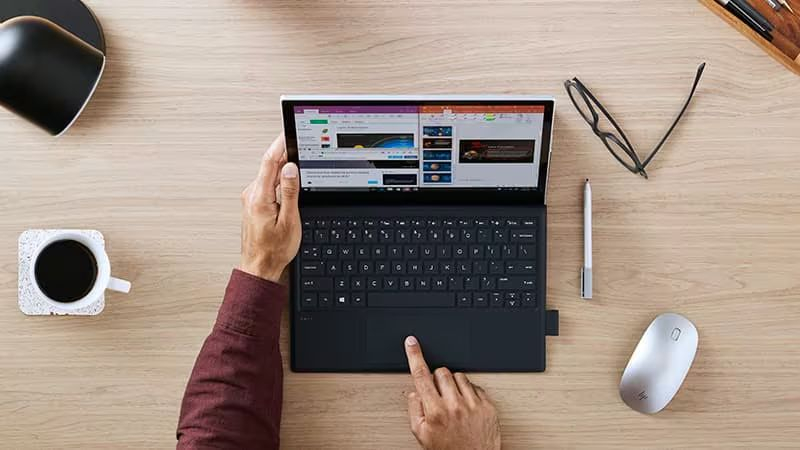This week, two major PC makers, Dell Technologies and HP Inc., reported their results for the previous fiscal quarter. With their forecasts for the current quarter, they disappointed analysts, who as a result stated that there were no prerequisites for a rapid recovery in demand for finished PCs.

Image source: HP Inc.
In the past fourth fiscal quarter, HP Inc. faced revenue growth of 1.7% to $14.1 billion, which suggests that the result exceeded market expectations. This is already the second quarter of the current year when the company’s revenue is growing year-on-year. Before that, it had been continuously declining for eight consecutive quarters. HP Inc. annual revenue decreased by 0.3% compared to the previous fiscal year.
Business personal computers accounted for 46% of the quarter’s revenue, while consumer PCs accounted for only 22%. Sales of consumables for printing equipment brought the company 21% of quarterly revenue, printing systems in the corporate sector provided 9% of total revenue, and only 2% in the consumer sector. In total, the company received more than two-thirds of its revenue from the PC segment; printing devices and consumables for them accounted for just under a third of the revenue.
The company’s operating profit for the quarter reached $1.4 billion, of which 61% was provided by printing equipment and consumables, and PCs formed the remaining 39%. By the way, the operating profit margin in the office equipment segment (19.6%) is much higher than in the PC production sector (5.7%).

Personal systems alone brought HP Inc. in the last quarter, $9.6 billion in revenue, which is 2% more than the results of the same period last year, and in quantitative terms, deliveries increased by 1%. If in the commercial segment PC shipments increased year-on-year by 4%, then in the consumer segment they decreased by 3%. Revenue accordingly grew by 5% in the commercial sector, and fell by 4% year-on-year in the consumer sector. In general, revenue in the personal systems business was able to grow mainly due to increased supplies in the commercial segment and an increase in the average PC selling price. The commercial sector provided 68% of revenue from PC sales, while the consumer sector accounted for the remaining 32%. According to the head of the company, Enrique Lores, the release of a new version of Windows in this generation does not stimulate the growth of demand for new PCs as it happened before.
The printing equipment segment brought HP Inc. based on the results of the last quarter, $4.5 billion. Revenue grew year-on-year by 1% and by 2% sequentially. Of this amount, 65% was provided by consumables, revenue from the sale of which increased by 2% year-on-year. In the segment of commercial document printing devices, the company’s revenue decreased by 1% year-on-year, but generated 28% of all revenue in the printing area. Finally, sales of document printing devices in the consumer sector increased revenue by 3% year over year, but it formed only 7% of all cash receipts in this area. Deliveries of printing devices across all verticals grew by 10% in volume terms last quarter.

The forecast for specific earnings per share in the current quarter of 70 to 76 cents, as Bloomberg notes, turned out to be noticeably lower than the 86 cents per share of HP Inc. forecast by analysts. The forecast for the full 2025 fiscal year, which has already begun on the company’s calendar, assumes unit earnings of $3.45 to $3.75 per share, the middle of the range exactly matching analysts’ forecast of $3.6.
Thus, the publication of HP Inc. reports. caused the company’s stock price to decline by 8% after the close of trading. The company’s CEO Enrique Lores said in an interview with Reuters that it will not only expand its range of PCs with AI capabilities, but will also offer similar capabilities in the printing sector, and also intends to introduce a new generation of devices for organizing video conferencing.
In turn, Dell noted good demand for its server systems due to the development of artificial intelligence, but in the PC segment it faces high competition and consumer uncertainty about the future, which forces them to limit purchases. The PC business segment of Dell shows the best results in the corporate segment, while in the consumer segment, revenue is worse than expected ($12.13 billion versus $12.43 billion). But the number of orders for server solutions for AI at the end of the quarters increased by 50%, and in monetary terms reached $3.6 billion. Revenue in the direction of infrastructure solutions as a whole increased by 34% to $11.37 billion, which was higher than expected. The company directly supplied AI servers in the amount of $2.9 billion last quarter. This is less than the $3.1 billion that it received the previous quarter.

Dell also disappointed investors with its guidance for the current quarter, setting revenue at $24 billion to $25 billion, below analysts’ expectations of $25.57 billion. Dell CFO Yvonne McGill said the PC refresh cycle is shifting into next year. Thus, she confirmed the thesis of the head of HP Inc. about the weak impact of the release of a new version of Windows on consumer demand in the PC segment. Dell shares fell by 10% against the backdrop of this news, although since the beginning of the year they have been able to strengthen in price by 85%.